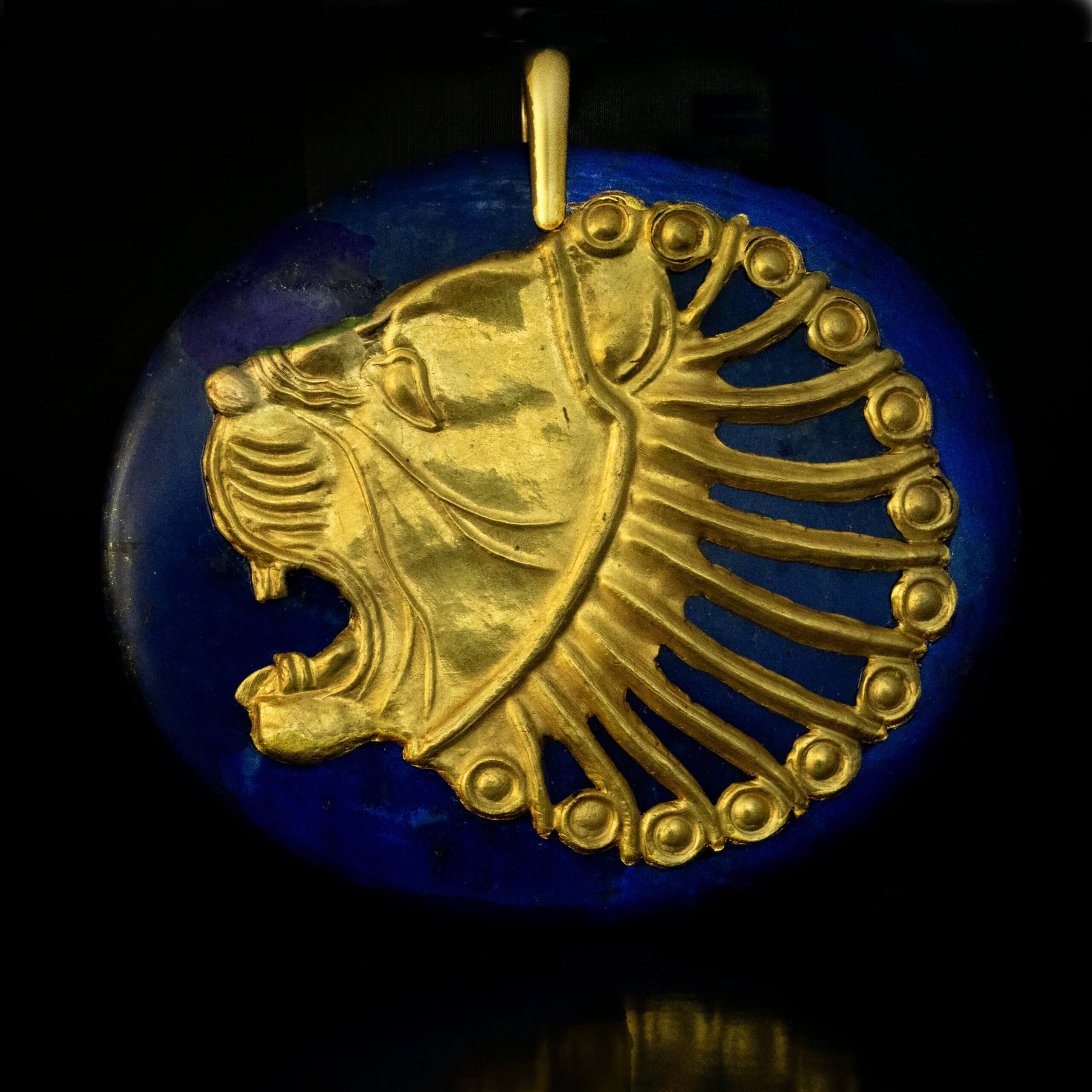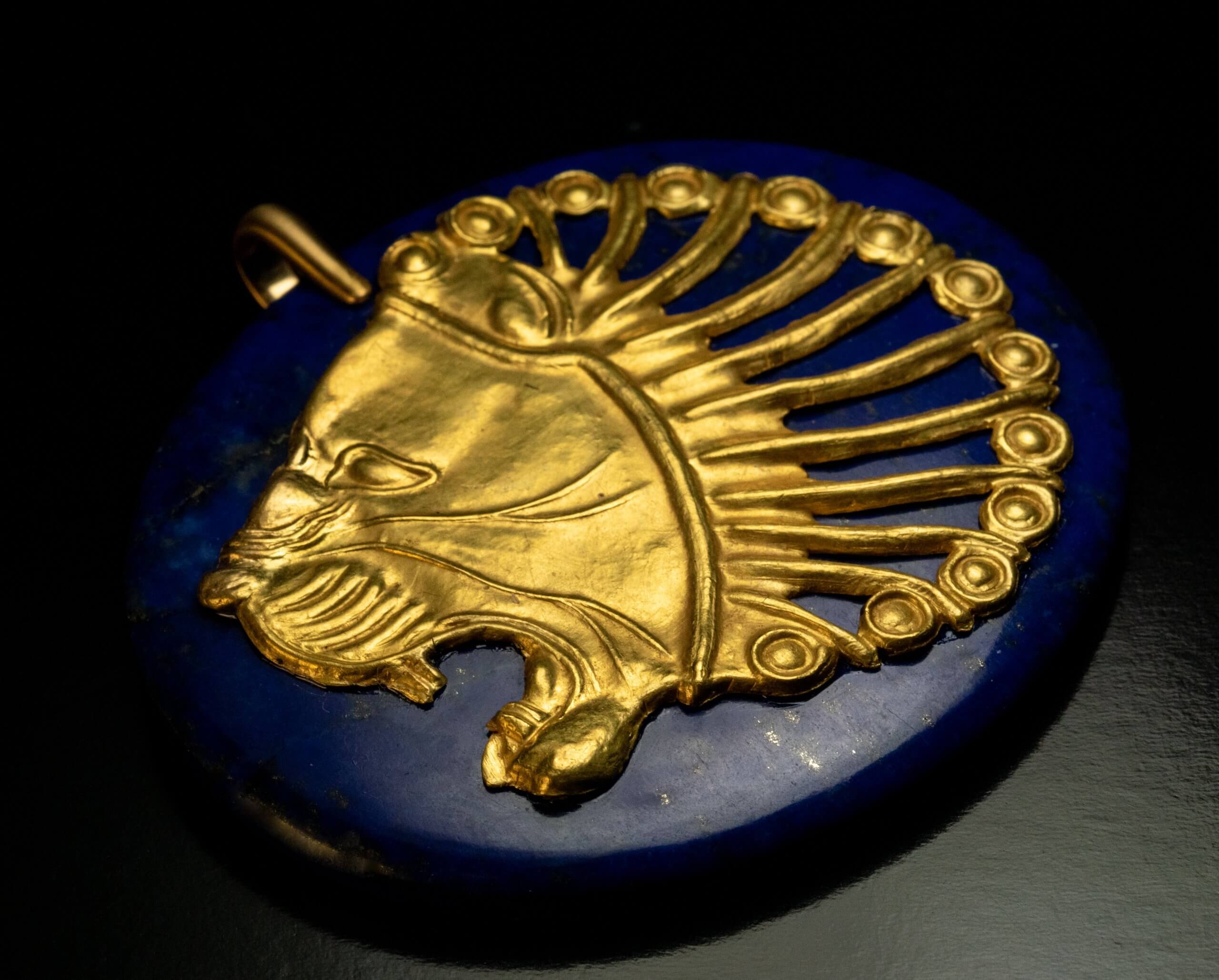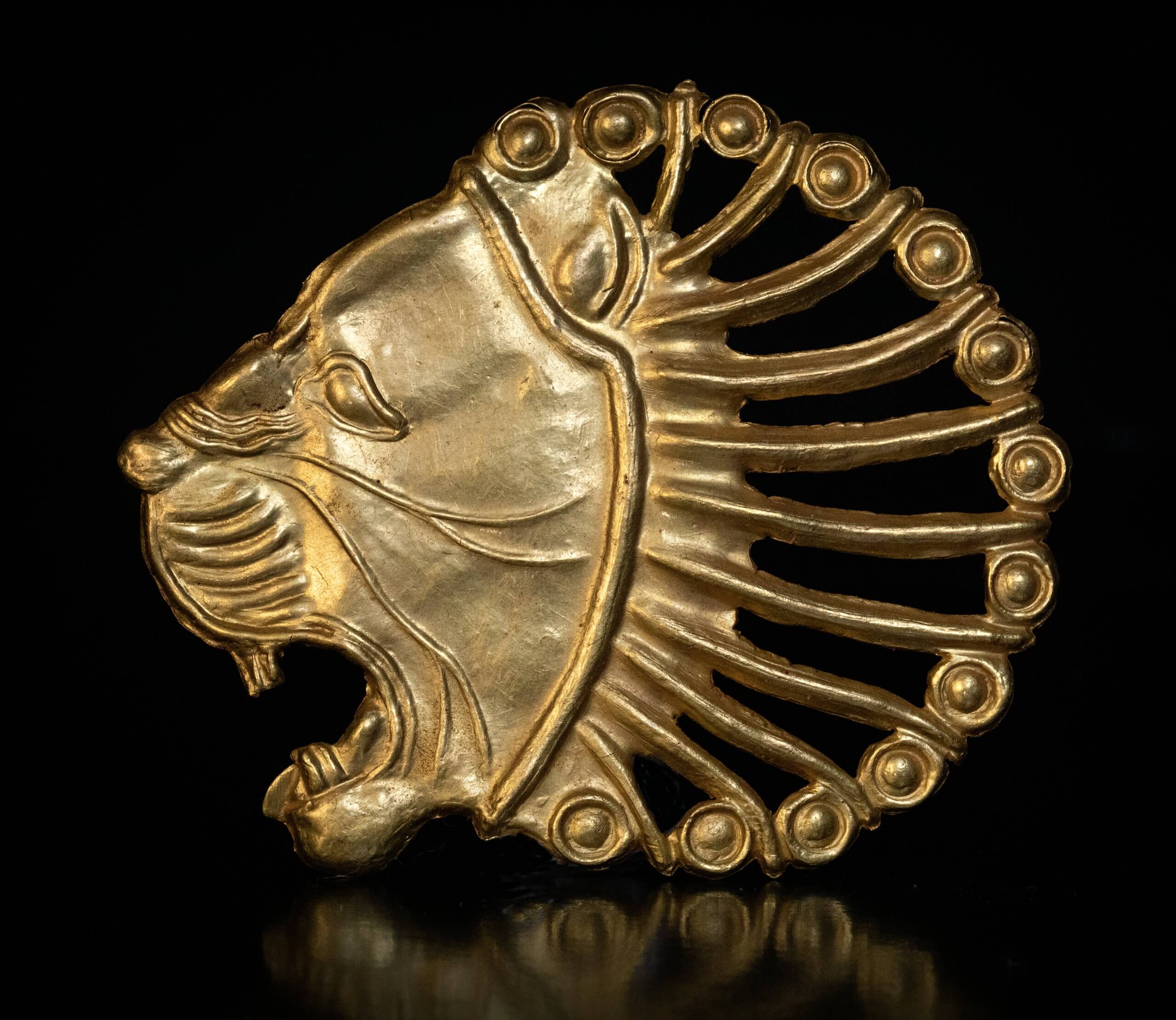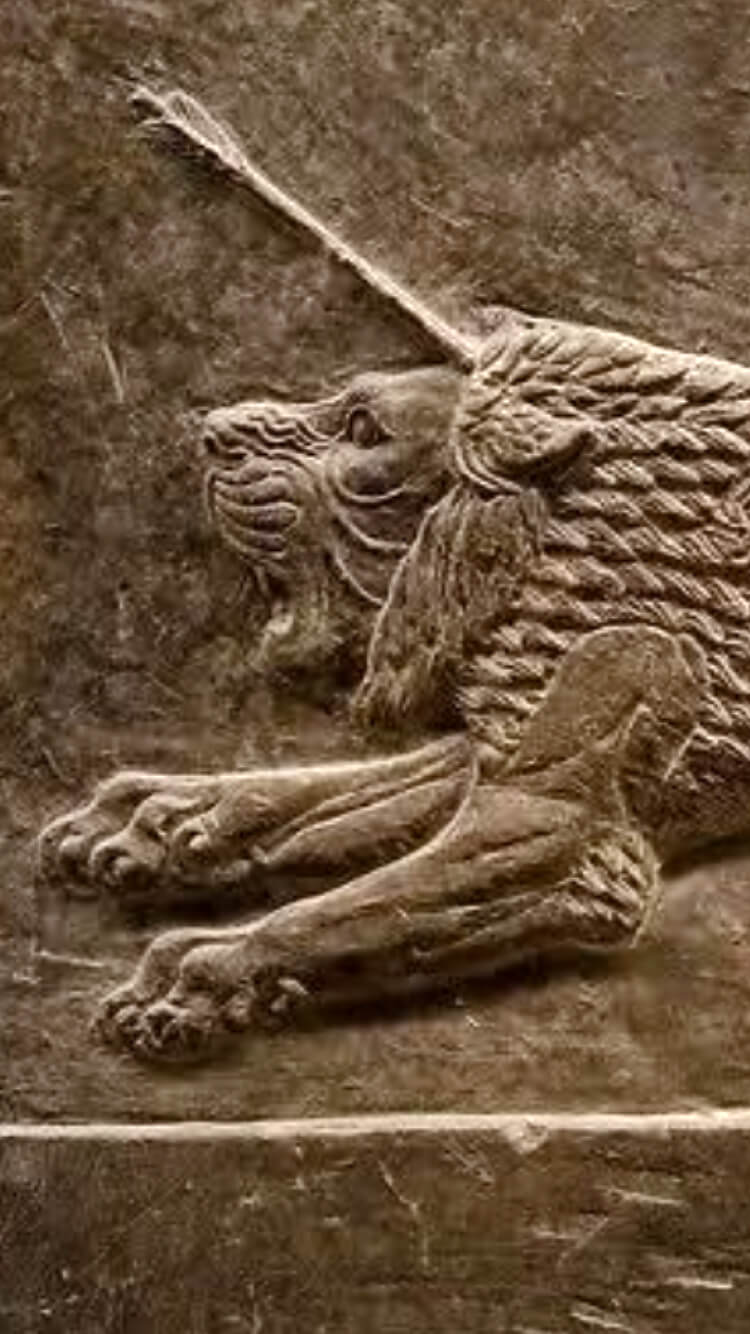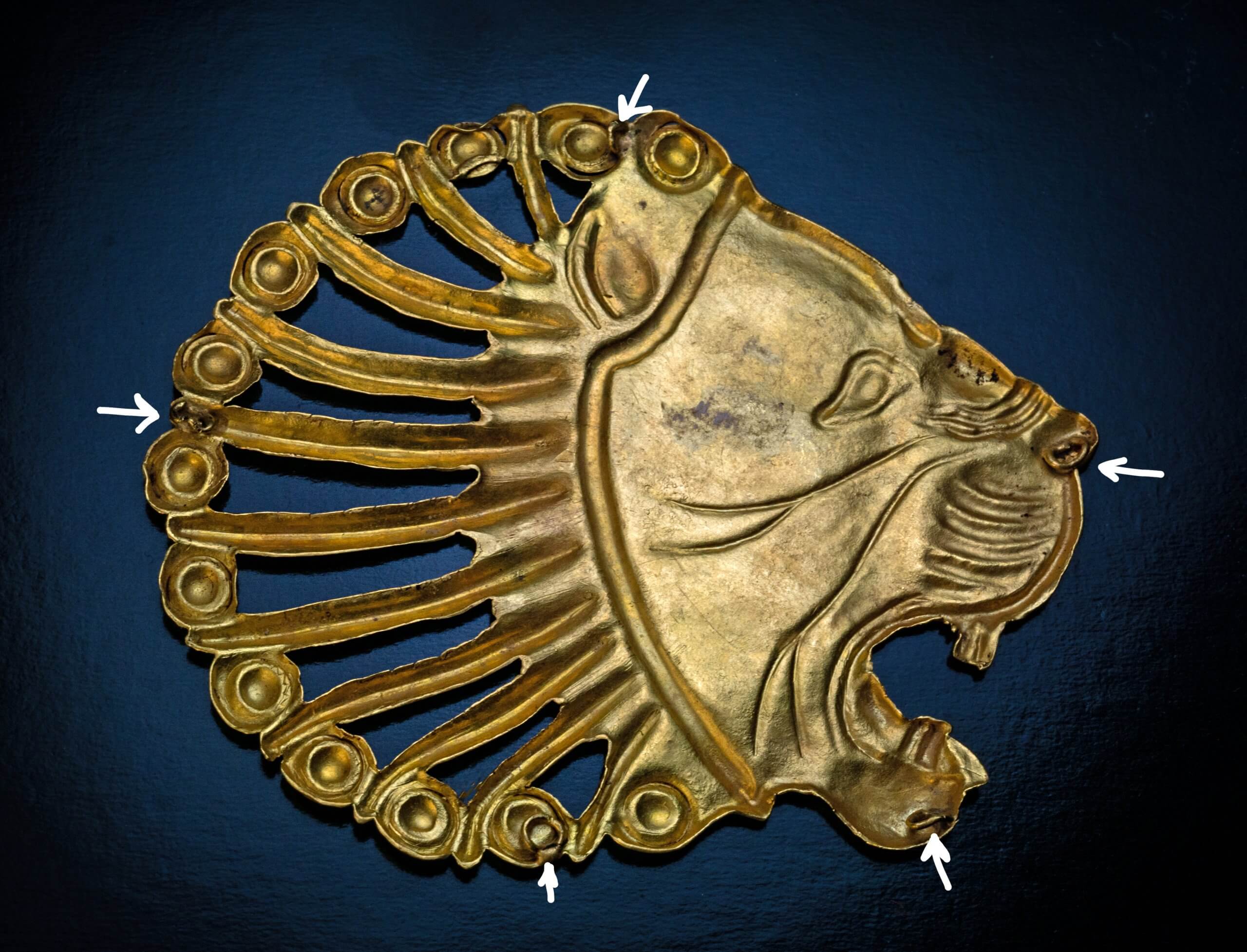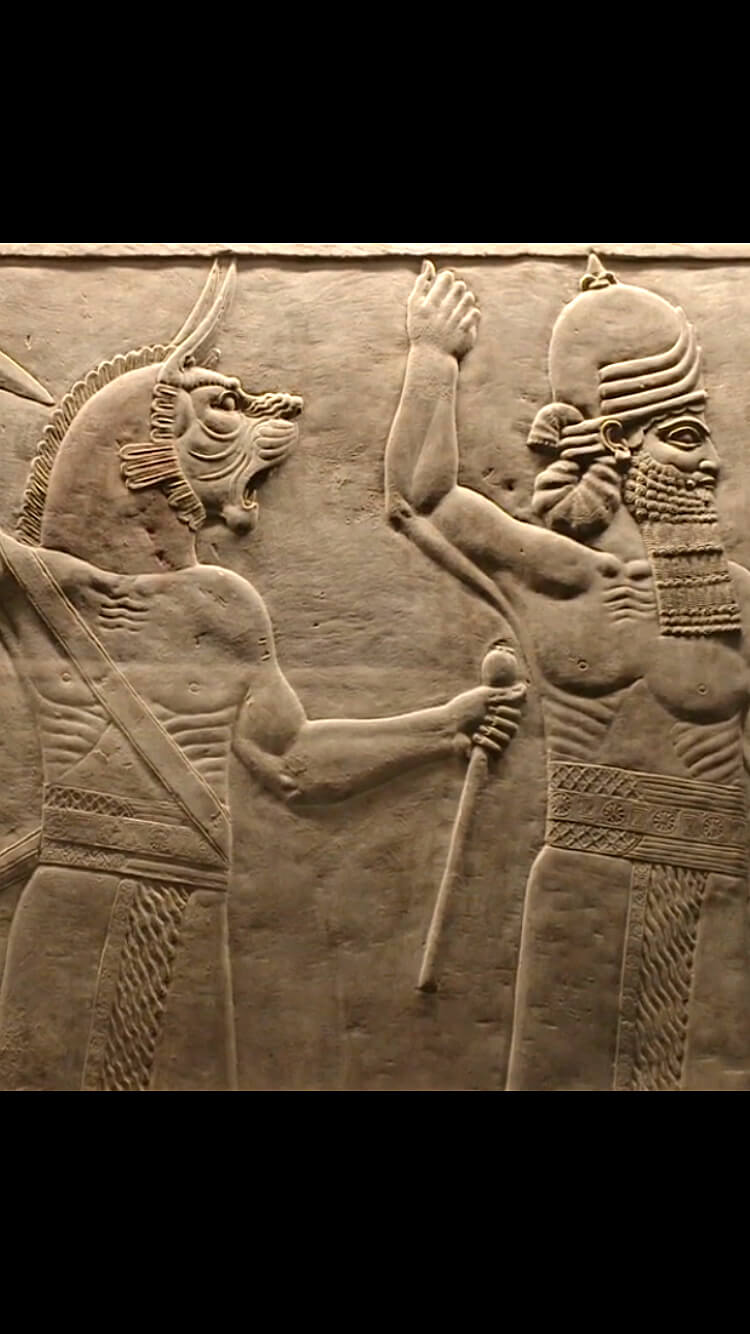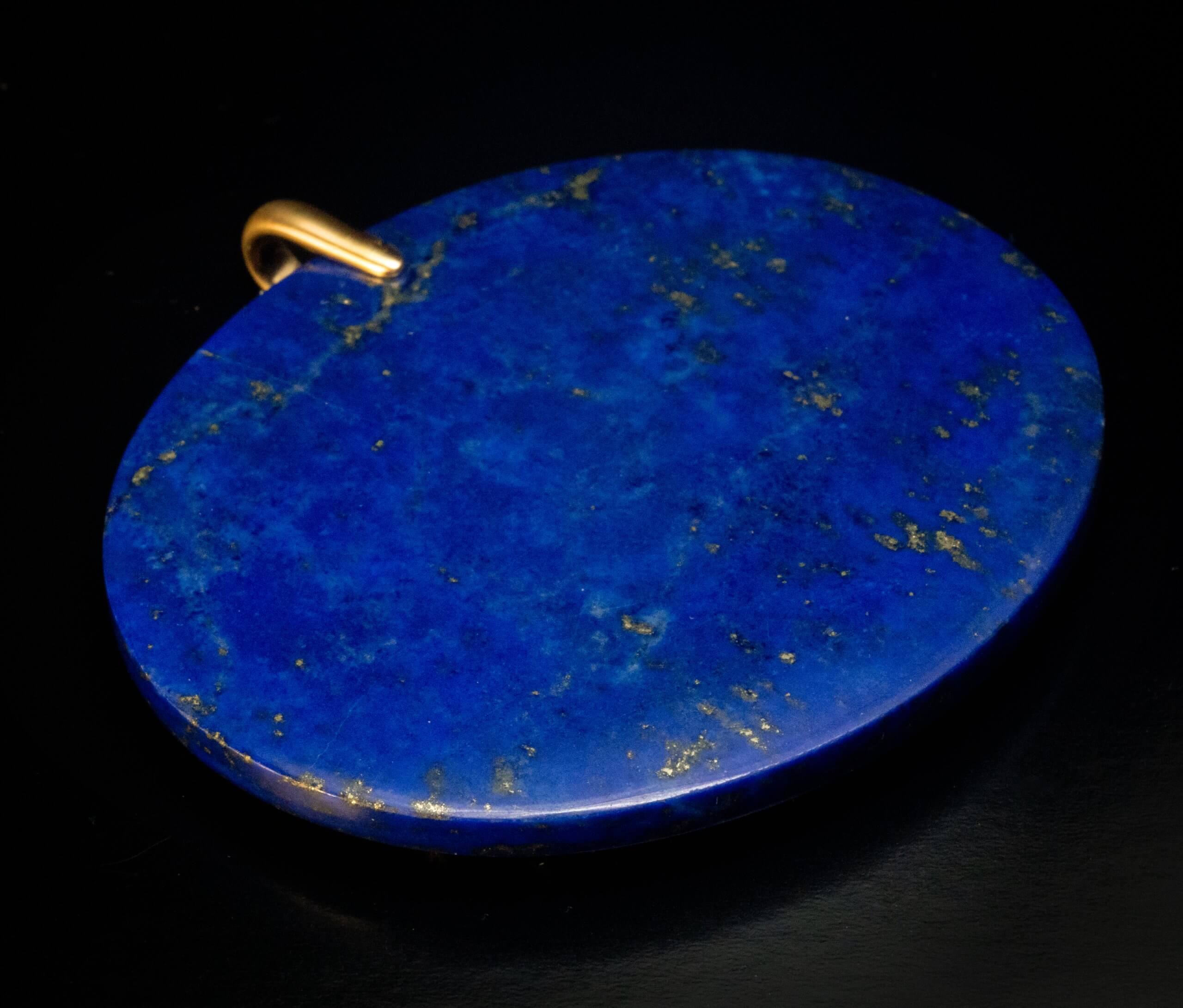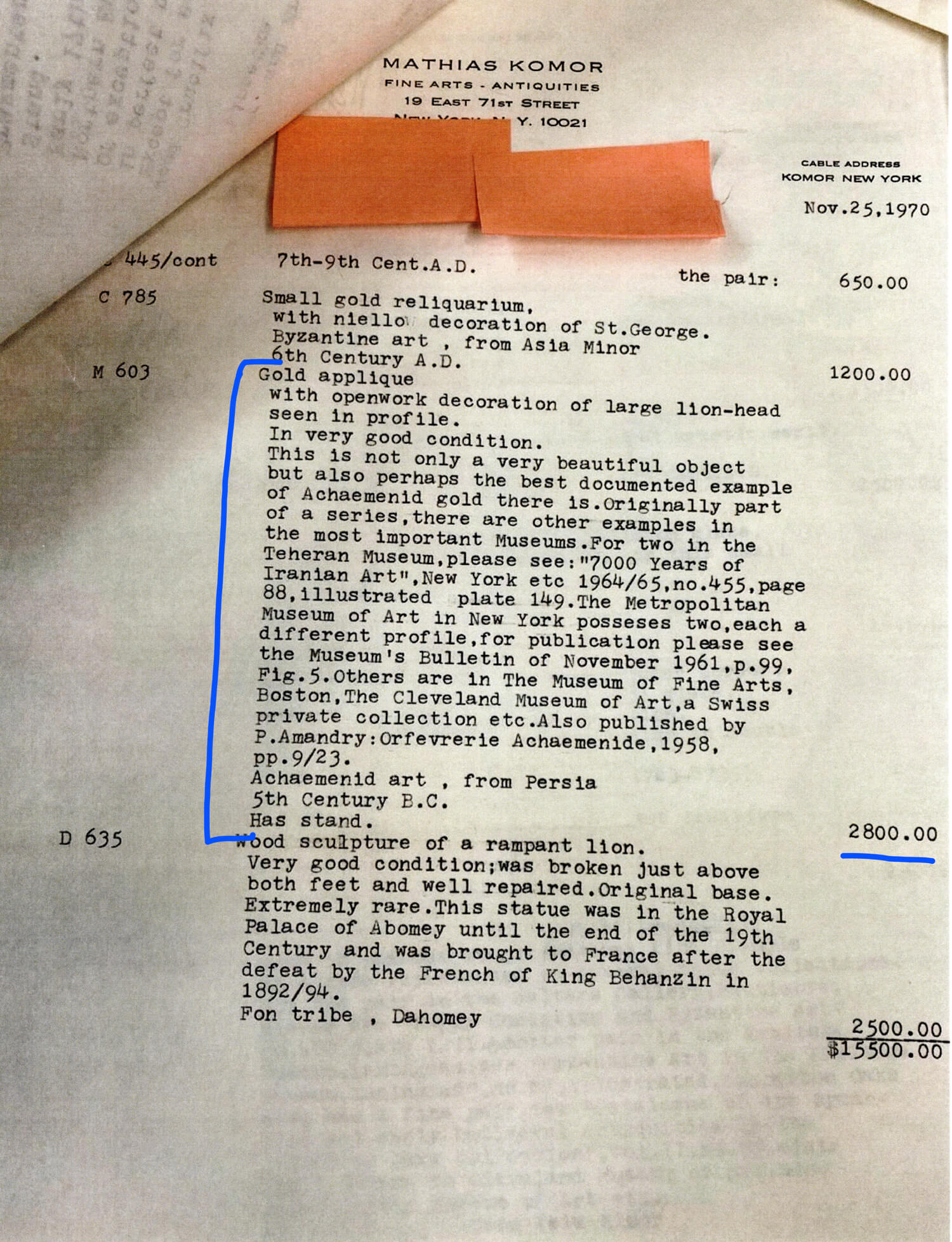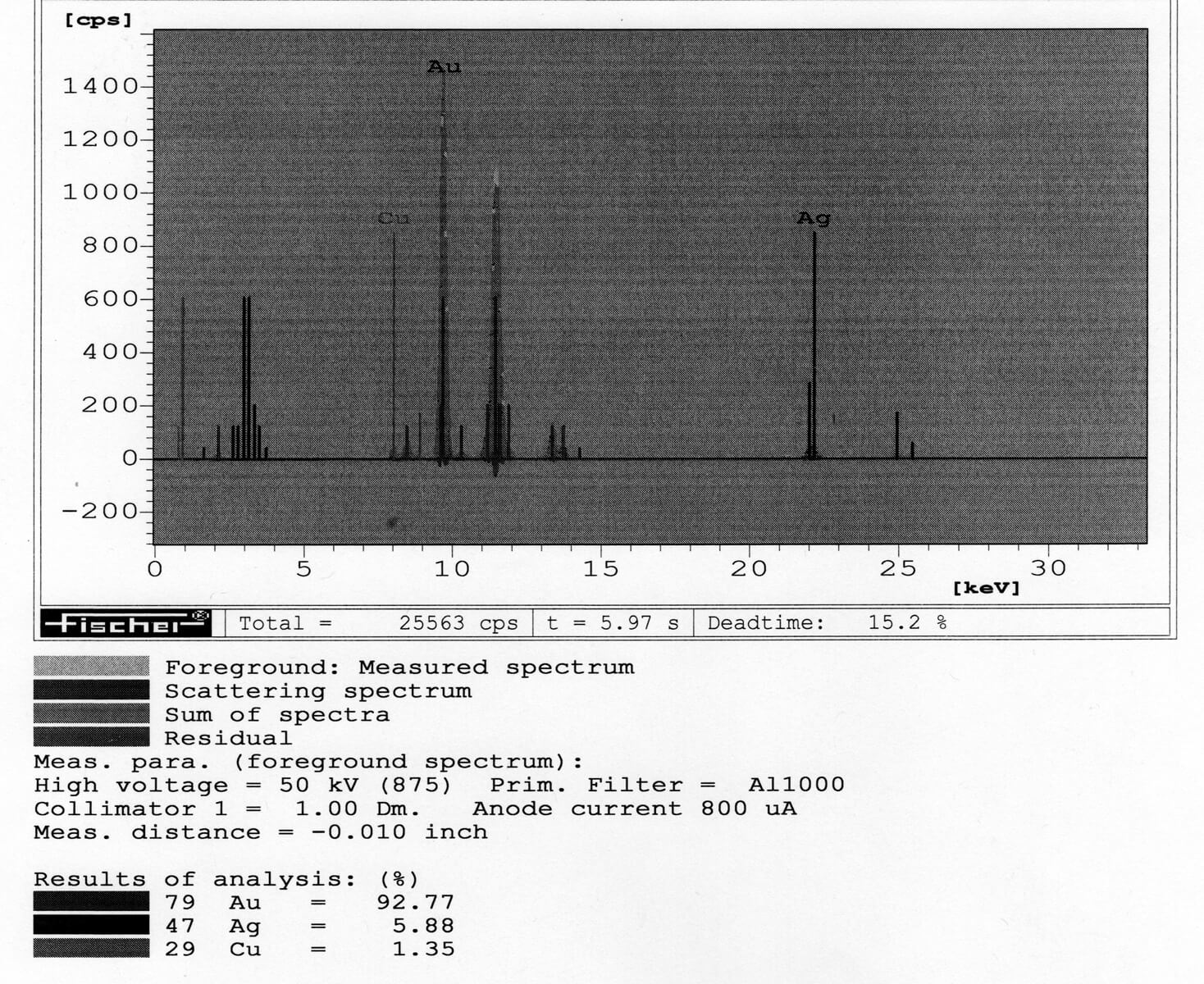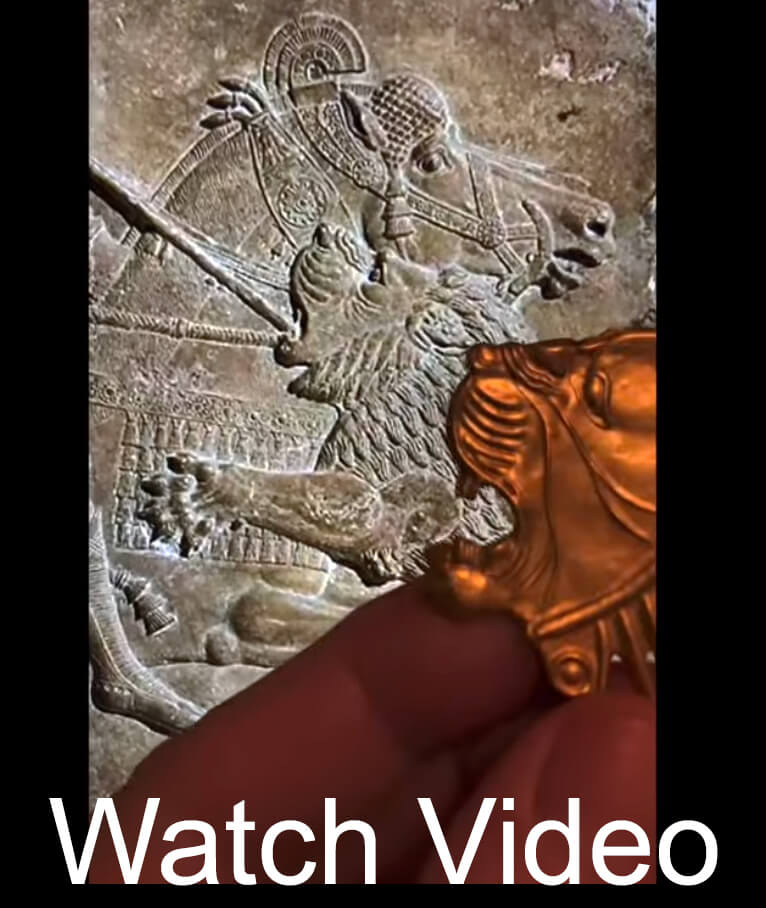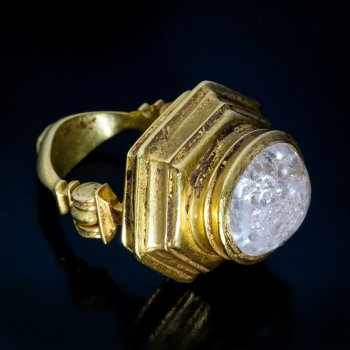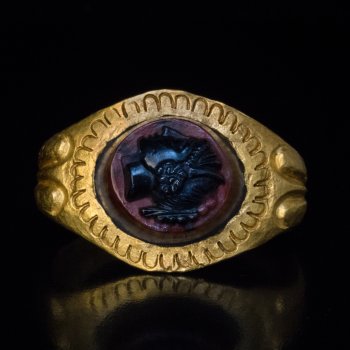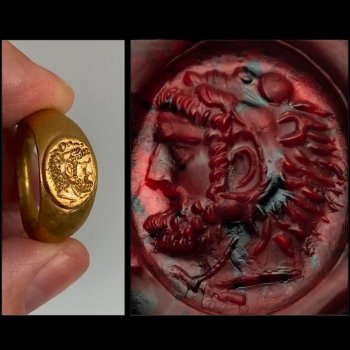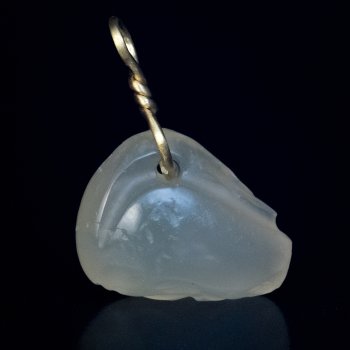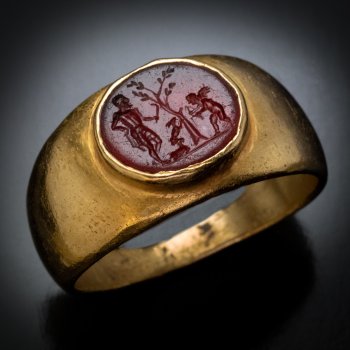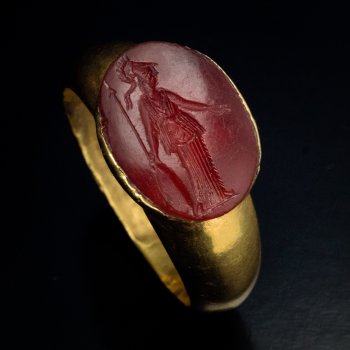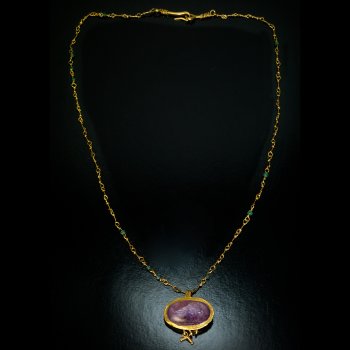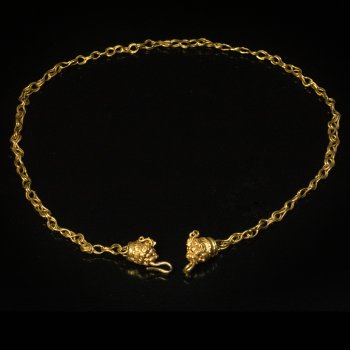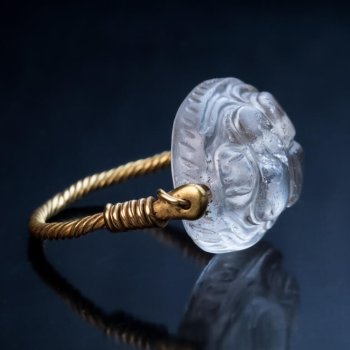Achaemenid (Persian) Empire, circa 500 – 400 BC.
This striking gold lion appliqué, once adorning the attire of a Persian king from the Achaemenid dynasty, has been recently mounted on a lapis lazuli plaque and adopted as a pendant.
Lion hunting was an exclusive privilege of the Persian kings, symbolizing royal authority. The detailed rendering of this lion’s head closely mirrors the lions seen in ancient Persian stone bas-reliefs of royal lion hunts, now displayed in major museums around the world.
The Achaemenid Empire, founded by Cyrus the Great in 550 BC, became the largest and most powerful empire on earth before its conquest by Alexander the Great of Macedon in 330 BC.
The appliqué, exceptionally well preserved for a 2,500-year-old gold artifact, features five small rings on the reverse used to attach it to royal garments.
This piece has outstanding provenance. It was sold in 1970 by the renowned New York antiquities dealer Mathias Komor (1909–1984), who handled many of the most important ancient artworks to appear on the market in the mid-20th century. According to Komor’s receipt, issued on November 25, 1970, this lion appliqué was described as perhaps the best documented example of Achaemenid gold.
It belongs to a distinguished set, with other examples housed in leading institutions: two in the National Museum of Iran (Tehran), two in The Metropolitan Museum of Art (New York), and others in the Museum of Fine Arts (Boston) and The Cleveland Museum of Art. One of the Metropolitan Museum’s examples is notably featured on the cover of its publication on Near Eastern art.
To learn more about the appliques at the Met Museum click here
The appliqué was sold by Komor to a private collector for $2,800 – a substantial sum at the time. For context, the average cost of a new car in 1970 was $3,450.
Metal analysis: 92.77% gold, 5.88% silver, 1.35% copper (approximately 22.26 Kt gold).
The lion measures 58 x 49 mm (2 1/4 x 1 15/16 in.)
Weight is 7.81 grams
The lapis plaque measures 68 x 58 mm (2 5/8 x 2 1/4 in.)

